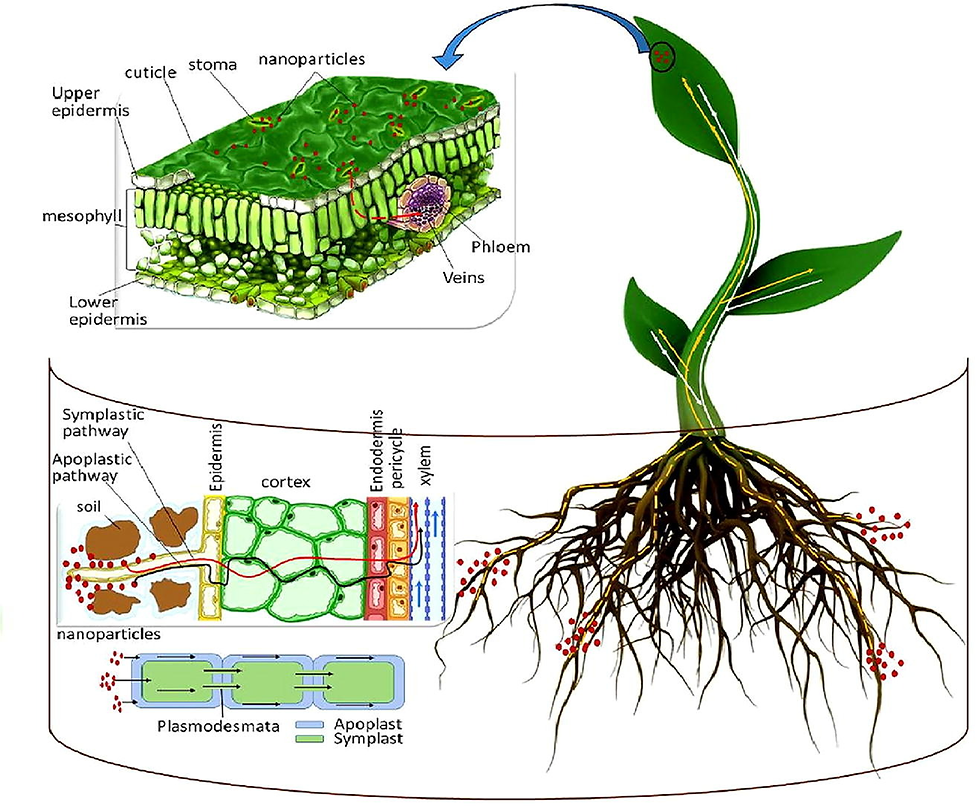The overlooked importance of mycorrhizal fungi as pest control agents
- Miguel M.LS.

- Jan 31, 2022
- 2 min read
Updated: Feb 1, 2022

Wheat field impacted by crown rot (Fusarium spp.), which causes the whitening and rotting of the seeds. Wheat is among the major crops grown worldwide and suffers heavy losses that could be mitigated with preventive methods
Since the late 20th century, the role of mycorrhizal fungi for plant growth and yield improvement in agricultural settings has been increasingly acknowledged. Policymakers, businesses, farmers, and researchers around the world grow increasingly aware of the complexity of the processes that bring food to everyone ─ processes far, far more complex than the mechanistic input-output model of conventional agriculture, in which the input of labor and inorganic fertilizers produces stable yields as a resulting output. The process of ecology as a science, over time, has shown that a system is most stable when there are many elements to support it; much like it happens when a table has four legs instead of three. Mycorrhizal fungi have been demonstrated to be a fundamental pillar in building food production systems that produce food and endure over time, truly guaranteeing food security for the world’s tables.
A benefit of Mycorrhizal Fungi Powder associations has been overlooked, however, as the focus is placed on these fungi as nutrient-absorption enhancers or as extended ‘roots’ for the plants they colonize. Biological pest control, in fact, is another of the major benefits brought by mycorrhizal fungi to agricultural settings. In addition to everything else they provide, these fungi are serving a protective function for crops twenty-four hours a day, seven days a week, as a review published in 2018 explores. According to the analyses of the studies reviewed, mycorrhizal inoculants affects the pest resistance capabilities of plants in four fundamental ways:
1) Improving the overall health of the plant by increased nutrient uptake.
2) Competing with pathogens, often out-competing them entirely.
3) Generating systemic acquired resistance (SAR) in the plant.
4) Generating induced systemic resistance (ISR) in the plant.
Of these, the most interesting to the scientists and researchers are the last two, as they are not just a byproduct of the arbuscular mycorrhizal (as the first two are) but direct mechanisms of pest control displayed by mycorrhizal fungi when they colonize plant roots. SAR and ISR are both the essential methods through which the immune system of a plant works: through SAR when the infection or the attack of a pathogen is local, increasing antibody count and aggressively targeting the pathogen, and through ISR when the infection is widespread, by inducing a general increase in the defensive mechanisms throughout the whole plant. The Mycorrhizal Powder naturally generates, for example, the organic compound Acibenzolar-S-methyl, often manufactured in laboratories and sold as an inorganic ‘fungicide’, when it is simply an activator of this immune response in plants.
Mycorrhizal fungi act on plants as vaccines in this sense, stimulating a defensive response that is still there when real pests attack. This ensures that plants are always on their best always, in terms of their immune systems: an invaluable service in a world where up to 40% of all crops are lost to pests yearly.



Thanks for sharing these insights about pest control! If anyone is looking for reliable pest control in Vancouver, check this out!
If you’re dealing with a bee infestation, it’s essential to act quickly and contact professionals. For expert services in bee removal Toronto, Pesticon offers reliable and safe solutions to ensure your home or business is free from unwanted bees.